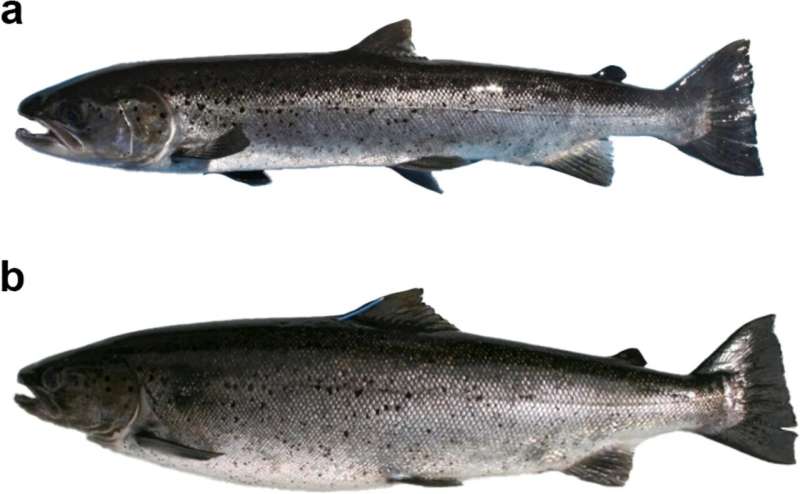This article has been reviewed according to Science X's editorial process and policies. Editors have highlighted the following attributes while ensuring the content's credibility:
fact-checked
trusted source
proofread
Once they have laid their eggs, fish become 'young' again: Study

The physical relief—in body weight—that temperate fish like cod and Atlantic herring experience after they spawn for the first time allows them to breathe in more oxygen and develop a voracious appetite, all of which leads to a rapid increase in body weight.
New research published in Environmental Biology of Fishes turns on its head the widespread notion that fish stop growing after they reach first maturity as a consequence of having to dedicate most of their 'energy' to reproduction.
"In fact, growth is strongly affected by oxygen intake," said Dr. Daniel Pauly, lead author of the study and principal investigator of the Sea Around Us initiative at the University of British Columbia. "As fish develop, the growth of their 2D gills—which supply them with oxygen—cannot keep up with that of their 3D bodies—which demand oxygen. This tension triggers a hormonal cascade that leads to gonad maturation and spawning."
Up to that moment, about 25 percent of fish's total body weight is made up of fully mature, oxygen-consuming testes or ovaries. Once this weight is released, the gills—which remain unaffected—have a smaller body to supply with oxygen. This increased oxygen supply, combined with the ravenous post-spawning feeding, allows them to process their food more efficiently and compensate for the weight loss incurred during the pre-spawning period.
"It's like fish become their younger selves again and—much like teenagers—eat a lot and grow quickly, only in this case we are not talking about length but weight," Pauly said. "In other words, after spawning and the loss of body weight, growth is accelerated beyond what would be achieved by an increase in feeding alone."
To reach these conclusions, the researcher and his co-authors conducted a literature review focused on the 'gonadosomatic index' of fish, that is, the percentage weight of ovaries or testes relative to female or male body weight in bony fish, which covered both the periods before and after spawning events. These data were complemented with reports on immediate post-spawning growth in temperate fish and with original data on gonad weights of the six most important commercial fish species in Germany's Western Baltic Kiel Bight.
"In the literature, there are numerous accounts of the accelerated growth that occurs immediately after fish spawn, but the causes are usually not identified," Peter Sorensen, co-author of the study and a researcher at the University of Minnesota, said.
"However, the Gill Oxygen Limitation Theory, whose fundamental feature holds that the ratio between gill surface area, and hence, oxygen supply, and the fish body's demand for oxygen impacts on their growth, provides a simple explanation for the loss of live weight at spawning being a sufficient cause for post-spawning growth acceleration."
The paper "Post-spawning growth acceleration in fish as a result of reduced live weight and thus, increased food conversion efficiency" was published in Environmental Biology of Fishes.
More information: Daniel Pauly et al, Post-spawning growth acceleration in fish as a result of reduced live weight and thus, increased food conversion efficiency, Environmental Biology of Fishes (2023). DOI: 10.1007/s10641-023-01482-2
Provided by Sea Around Us



















